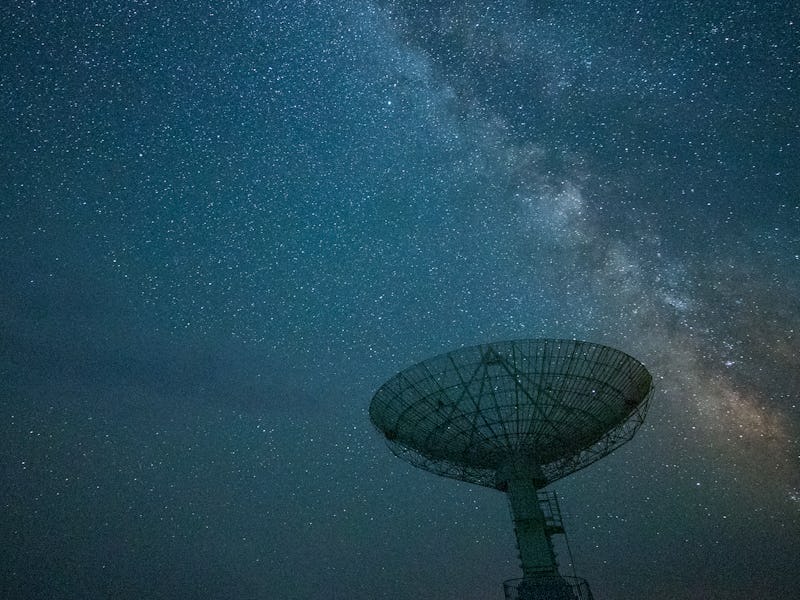One NASA asset will be critical to Moon and asteroid missions' success
Different missions are vying for a limited number of antennas.

The Deep Space Network (DSN) listens to more than 40 missions in our Solar System, including the Voyager spacecraft adrift in interstellar space. Now the DSN’s 13 antennas at three sites around the globe and the centralized control center at the Jet Propulsion Laboratory are getting ready for potential back-to-back days of vital exchanges to and from space.
These messages will track two of the most important missions NASA will perform this year: The Double Asteroid Redirection Test (DART), which will slam a spacecraft into an asteroid in hopes of changing its path, and the Artemis I rocket launch, which will investigate technology that might soon return humans to the Moon. But this tight scheduling is a recent occurrence thanks to a series of Artemis stumbles.
Here’s a timeline for the beginning of the week:
- Monday, September 26: DART’s kinetic impact with asteroid Dimorphos at 7:14 p.m. Eastern
- Tuesday, September 27: Artemis I’s target launch at 11:37 a.m. Eastern
Artemis I launch crept closer to DART
Both events weren’t designed to happen so close. But when Artemis I’s second launch attempt on September 3 didn’t take off, NASA had to pause trying to lift off, determine the issues that kept the rocket grounded, and then design a way forward to address them. NASA previously imagined Artemis I would have been doing the first leg of the weeks-long mission in September. When they assessed their new reality for the month, Artemis leadership decided they had to reseal the interfaces where hydrogen leaks were detected in fuel lines, and would afterward perform a fuel loading test that certifies the highly-flammable substance isn’t trickling out where it shouldn’t.
But before the space agency worked through those goals, leaders acknowledged this could put possible strains on the DSN. They need this network to handle Artemis I communications en route to and from the Moon, and to facilitate Artemis I’s release of small satellites that will learn about the Earth-Moon environment to support future missions. DART data is also crucial to obtain, because the entire mission rests on understanding the details of the strike. DART might prove a technology that helps Earth defend itself from a dangerous asteroid by nudging it onto a new course.
At a press conference earlier this month on September 8, Jim Free, associate administrator of NASA’s Exploration Systems Development Mission Directorate, said their next launch attempt would be Friday, September 23. “We’re trying to deconflict with the DART impact,” he said. “The conflict there is the use of the Deep Space Network… We picked the 23rd so that some of our critical events… critical requirements post initial launch would fall on the other side of the impact of DART, on the 26th [of September].”
September 23 is no longer an option. But their next choice, September 27, keeps Artemis I “on the backside of DART”, Free said.
Listening to messages from space
The DSN is a collection of facilities that are equidistant from each other across the world. The three DSN communication stations are located in Goldstone, California; Madrid, Spain; and Canberra, Australia, and together they help connect a mission’s team to its spacecraft.
The DSN is the Earth-side link for radio transmissions to fly off or come back. They allow scientists to know the location of their spacecraft, to send them commands, and to downlink critical data.
“Each project only needs one antenna, although we sometimes schedule two (a backup) for critical tracking events,” Bradford Arnold, DSN manager at NASA’s Jet Propulsion Laboratory, tells Inverse.
“If they are in the same field of view over a complex — say, Goldstone Deep Space Complex, near Barstow, California — there are four distinct antennas at the complex that can support DART. Of the four, two can support Artemis.”
Despite the back-to-back relay of critical messaging and possible overlap, things will likely run smoothly. In addition to the DSN, Artemis I will lean on a satellite communications system from NASA’s Near Space Network. Both will work in tandem when the lunar segment of Artemis I, called the Orion capsule, takes final measures to leave Earth’s orbit and shoot to the Moon.
“The DSN can support both DART and Artemis at the same time … that all said, it’s the total set of missions that are vying for our limited number of antennas, so scheduling amongst the projects with the DSN is the key,” Arnold says.
“We have over 40 missions, and currently 13 antennas available.”